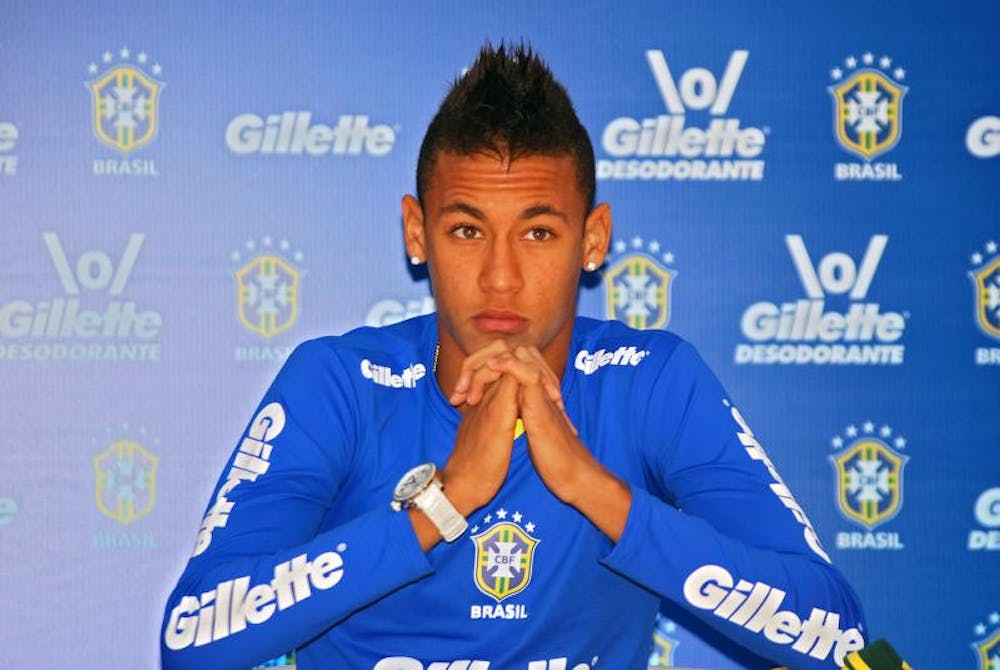Last week, amid the excitement of the winter transfer window in men's soccer, something seismic happened in Brazilian — and Latin American in general — soccer.
Neymar Jr., the most prominent and talented Brazilian player in activity, returned to his boyhood club Santos F.C., determined to reinvigorate his career in preparation for next year’s World Cup, as well as help out the embattled Peixe, who recently returned to the Brasileirão after suffering the first relegation in their long history in 2023.
Years ago, I wrote my first-ever article for The News-Letter’s Sports section on the rise of the Saudi Pro League: an investigation that was fully inspired by Al-Hilal’s $300 million deal with Neymar. His transfer to the RLS was an upset amongst Brazilians, who had grown accustomed to supporting the forward in his participations in the UEFA Champions League and other European competitions. Throughout his time in Saudi Arabia, he was continuously linked with a move back to Europe; specifically, back to F.C. Barcelona — where he won the 2015 Champions League.
But now, the Brazilian forward is home at Santos. His announcement prompted a euphoria unlike anything else I’ve ever seen — my cousin described it as the biggest “return” of a national star since Ronaldinho Gaucho departed Milan for Rio de Janeiro in 2011. Neymar’s participation in this year’s Brasileirão will be the biggest story of the season, regardless of what happens from now onwards.
However, it is impossible to discuss this news without taking into account what it means for the Brazilian men’s national team. Despite the strong attacking quality of the Seleção — such as Vini Jr., Raphinha, Rodrygo and Savinho, to name a few — the 34-year-old former captain remains the heart of the team. He is still the creative leader that allows for the wondrous display of Jogo Bonito that has become synonymous with the Canarinha.
Last year’s Copa America tournament demonstrated that the national team is not yet prepared for a post-Neymar world. There is simply no one who, at the moment, is ready to take on the responsibility that the Barcelona and Paris St. Germain alum does in the Seleção. And next year will all but officially be the last time he can achieve his dream of bringing a World Cup back to Brazil and writing his name amongst the eternals of the sport.
In my opinion, playing in the Brazilian League is the best way for him to prepare. This is due to a variety of reasons: To start with, while it receives less attention than its European counterparts, the Serie A is incredibly competitive. The 20-player competition has had, in its 69 years of history, 17 different victors, and the most victorious club (Palmeiras) has won 12 titles. La Liga, comparatively, has had nine victors, with the most victorious club (Real Madrid) having won 36 times. A club will fight for the title one year and then be facing relegation the next. There is very little “safety” amongst top clubs, as seen by Atlético Mineiro’s 12th place finish this past year.
Secondly, the tournament will prepare him for the physicality of a World Cup a lot more than other leagues could. South American club football is still incredibly physical, which sounds like an extensive injury risk. But, if you can survive a defensive line of young academy players and hardened veterans competing for their hometown teams, you can survive a contested semi-final against defensively-strong national teams like Argentina or the Netherlands. His first games have shown that his status as a national icon will not spare him any of the brutal tackling that is part of the status quo.
Lastly, this move will allow him to once again be in contact with his origins and the environment that molded his game. Neymar seems to be aware of this, calling his move to Santos a return to his “soccer soul.” The opportunity to play in the league that introduced him to the world will hopefully give him space to return to his creative, fast-paced and beautiful style of play.
With 483 days to go until the next World Cup, Neymar now faces the conundrum of how to split his time between helping Santos thrive in Serie A and bringing them back to the Libertadores Cup, while preparing for the inevitable call-up to lead his country in 2026. Brazil — and the world — will be watching.





